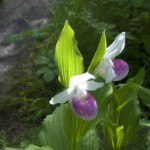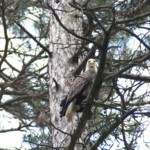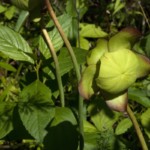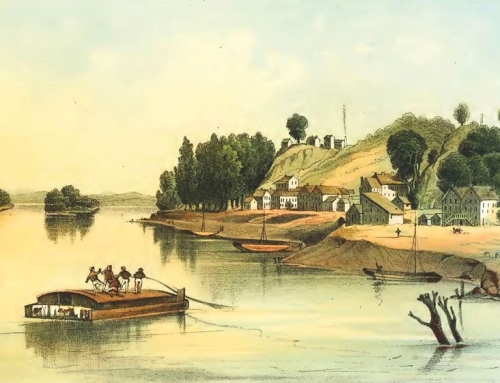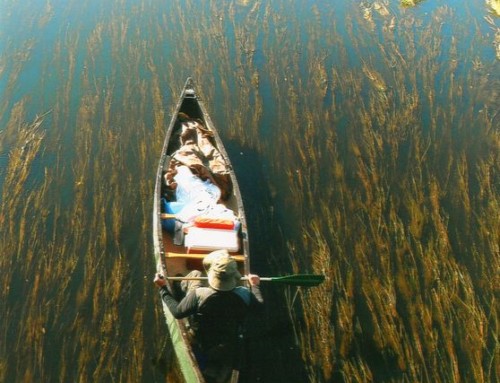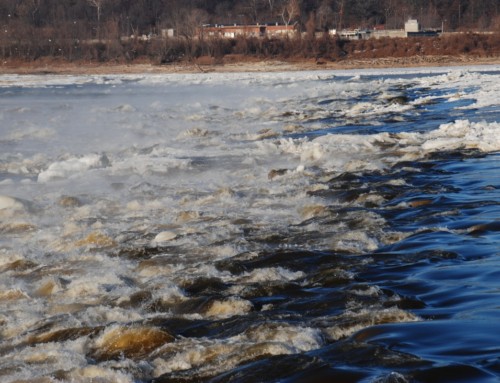The forests Up North may not have the majestic red and white pines that they did before we cut them down, but they still teem with life. Wildlife busily feasts as the forest erupts with a steady succession of treats that ripen in the brief window from last to first frost.
The weather this year has been especially unusual, with snow and ice well into April, followed by a bout of high heat about three weeks later. In Bemidji, the last frost was on May 20, but less than a week later the high rose to 88 degrees. Like much of the central U.S., the cold weather didn’t fade away, it was blown into oblivion when someone threw open a furnace door.
I was in Minnesota again last week with John, and by the time we got there, the weather was settling into a more seasonal pattern. I was excited to find so many wild flowers in their full glory. At Itasca State Park, the Showy Lady’s Slipper—the Minnesota state flower—was at its peak and seemed to be everywhere.
We took advantage of the good weather with a hike along the Bohall Trail, through a remnant of an old growth forest. As we walked the trail, we heard a rustling just behind us, something that sounded like a big animal moving around in the brush just behind us. Naturally we did the only reasonable thing—we slowly backtracked to see what it was. As we reached a narrow clearing, a bald eagle flew up and over our heads, finding a perch on a pine tree about thirty feet above us.
After dinner that evening, we settled into our screened-in porch on the northern shore of Lake Bemidji. The air was cool enough that I exchanged shorts for sweat pants. As the sun slowly went down—it didn’t get dark until well after 10pm—we chatted and eavesdropped on a conversation between loons out on the lake. Imagine that—me, a city boy, just sitting and listening to loons for an evening. It’s hard to get caught up with the state of the world or how many books I’ve sold this month when I allow myself to get lost in the calls of the loons.
Even with the loons and the wonders of Itasca State Park, the unexpected highlight of the week was a morning walk through the bog at Lake Bemidji State Park. Bogs are strange places, with squishy peat that covers the ground and plants that seem like they came from extraterrestrial sources.
We found ourselves in an impromptu scavenger hunt, trying to spot and identify as many bog flowers as we could. It helped that the bog trail had signs that showcased many of the plants, but some plants were quite well hidden. We found two kinds of orchids (Minnesota—yes, Minnesota—has about two dozen native orchids), plus blooming pitcher plants and their carnivorous cousins, sundews.
I know there are parts of the Mississippi River that get more press than the Headwaters. And I know first-hand that most of the people who actually visit the Headwaters Region stop just at Itasca State Park and only then to take a quick photo of the Headwaters sign and family members gingerly crossing the rocks at the edge of the lake. We saw plenty of that last week, too.
And what a shame that is. If only more people felt the satisfaction of finding the Dragon’s Mouth Orchid or spent a little time catching a couple of loons in conversation, then we all might be a little better equipped to talk with each other about life’s bigger challenges.
©Dean Klinkenberg, 2018
Community-supported writing
If you like the content at the Mississippi Valley Traveler, please consider showing your support by making a one-time contribution or by subscribing through Patreon. Book sales don’t fully cover my costs, and I don’t have deep corporate pockets bankrolling my work. I’m a freelance writer bringing you stories about life along the Mississippi River. I need your help to keep this going. Every dollar you contribute makes it possible for me to continue sharing stories about America’s Greatest River!
